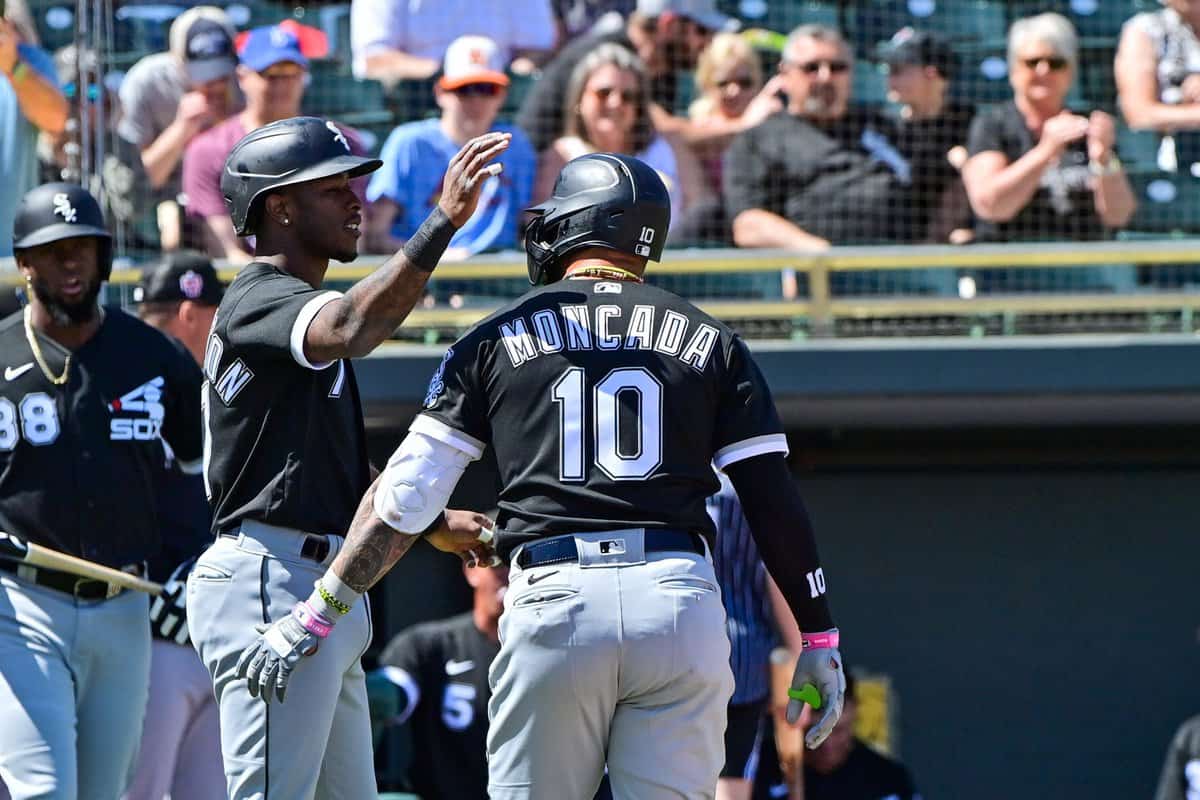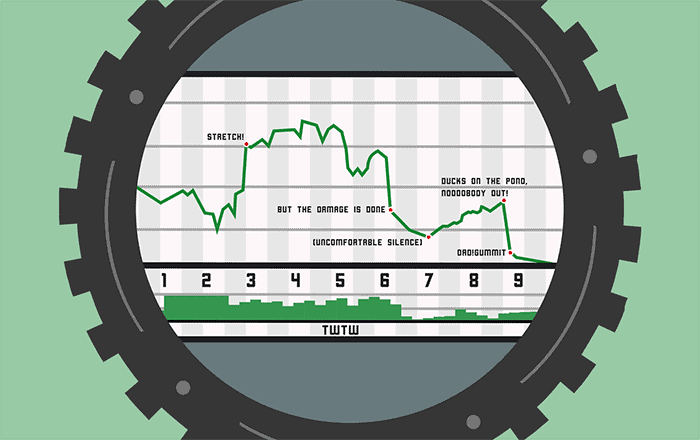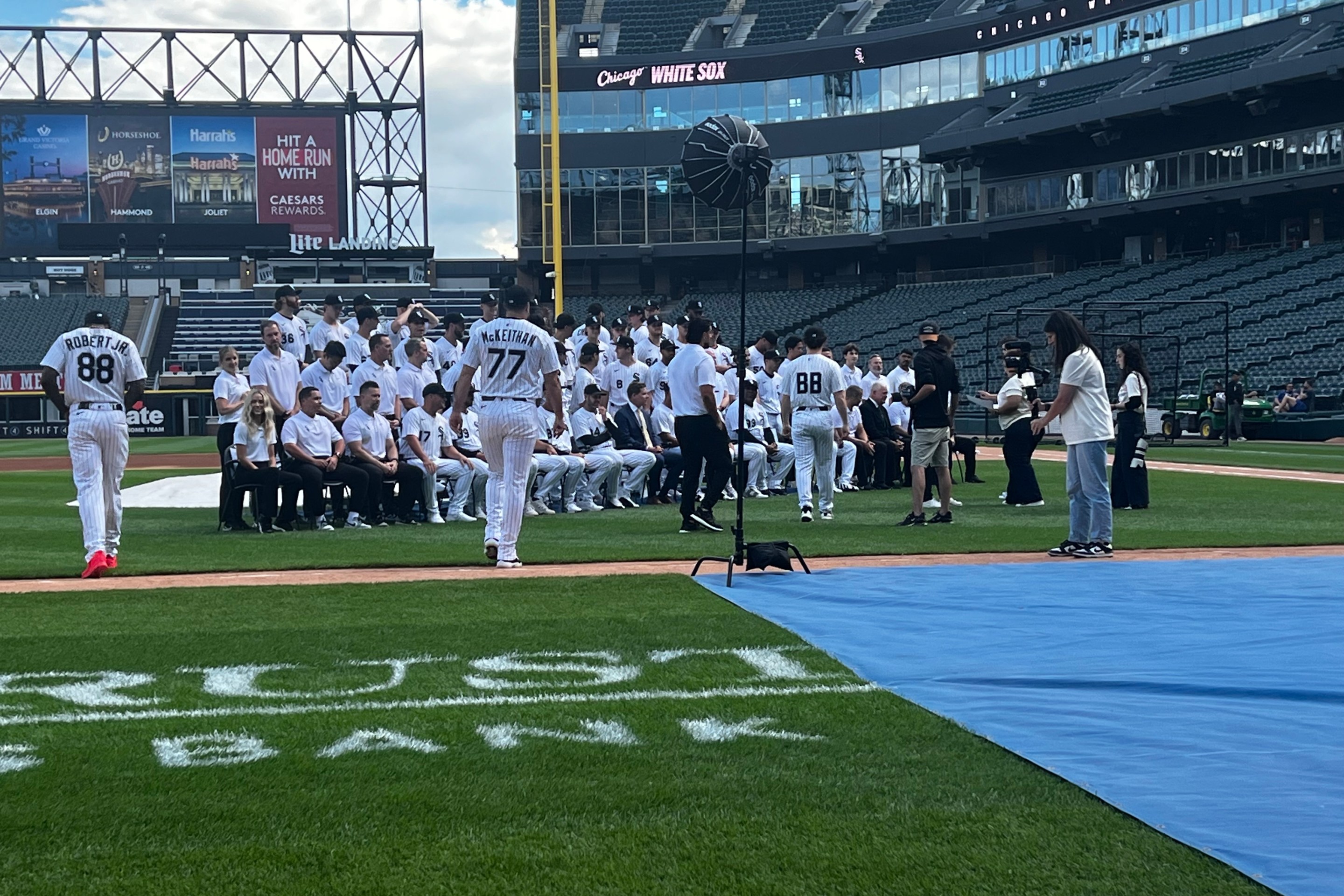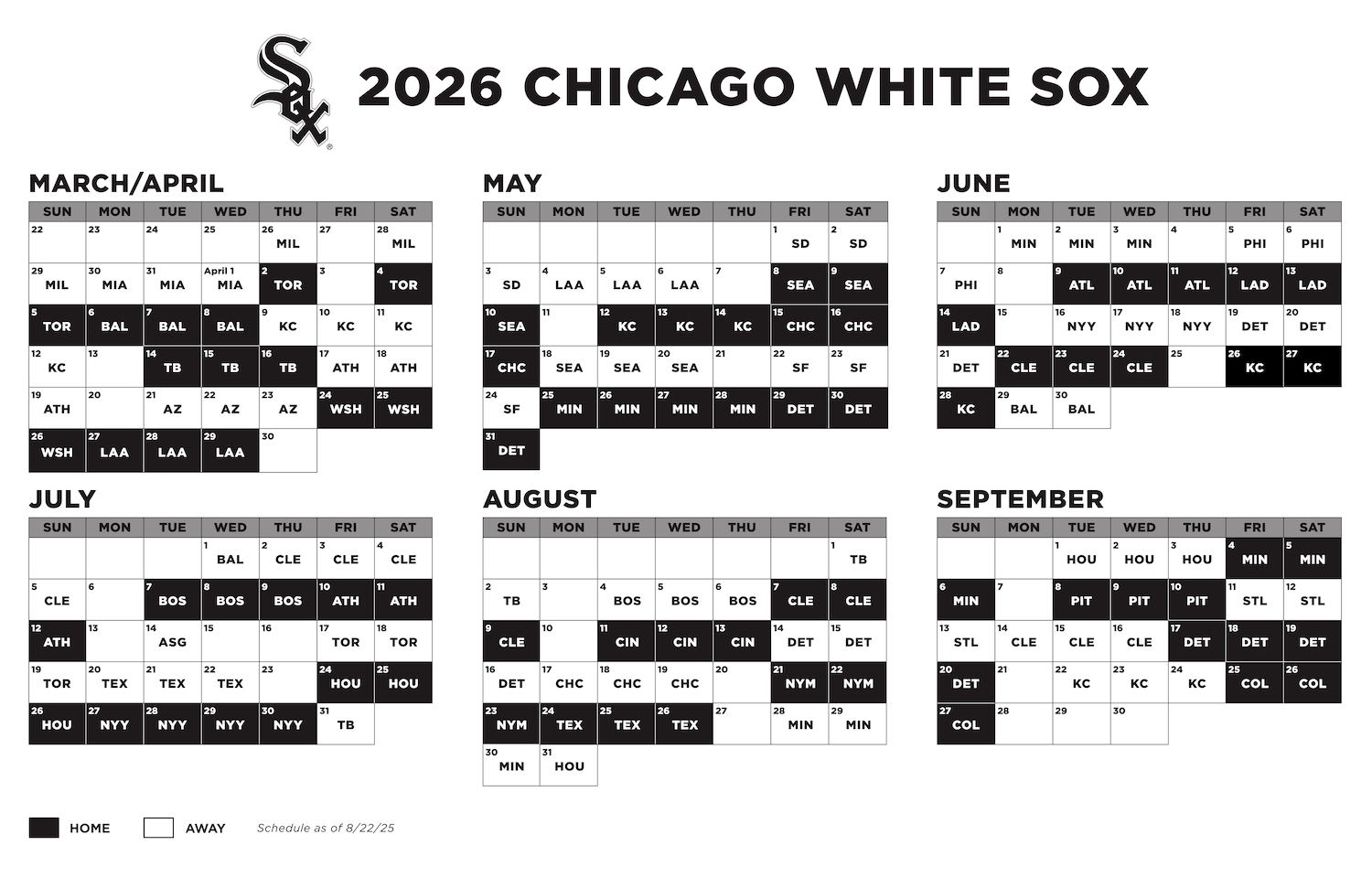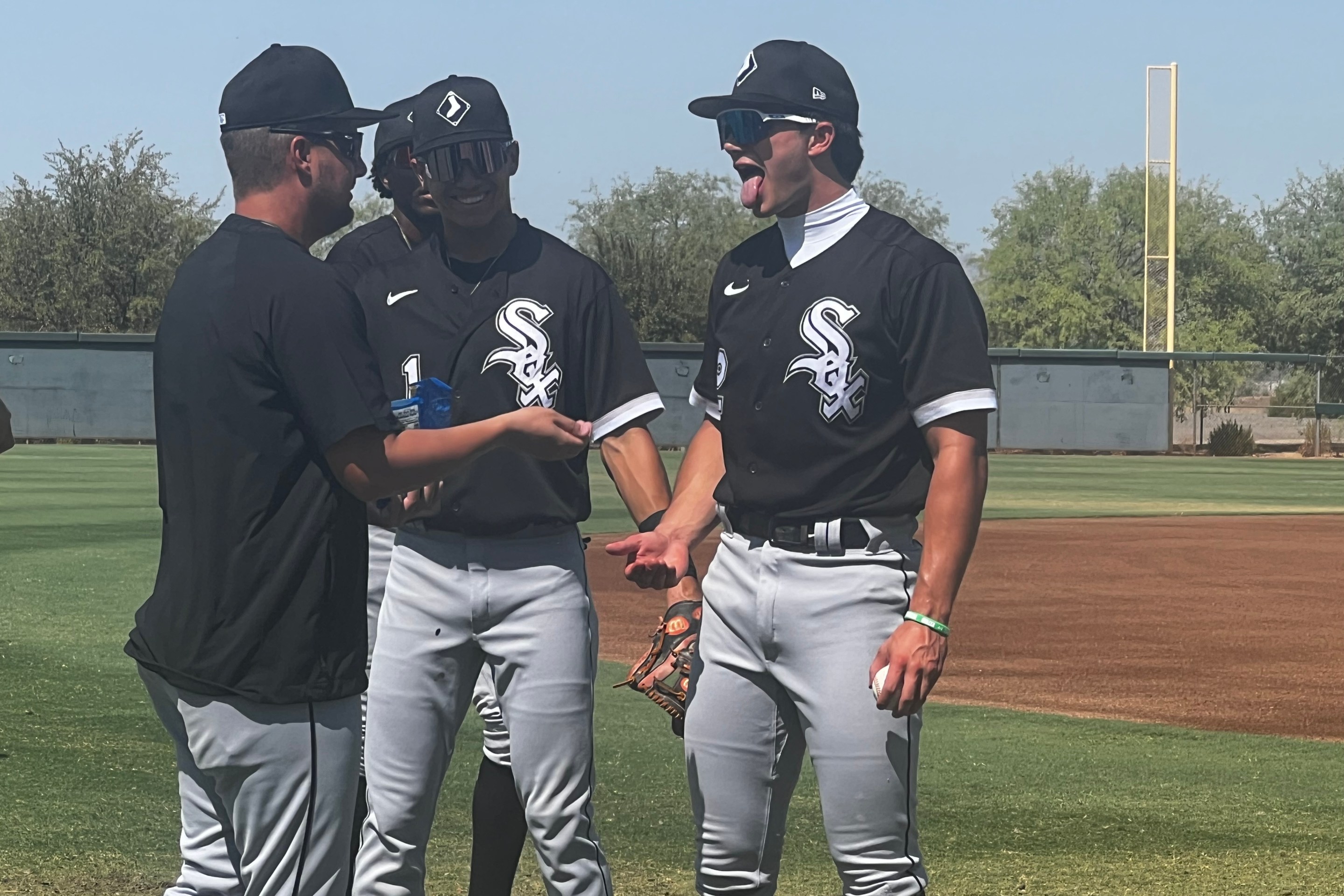If you missed the first half of this series, I covered the next 20 most essential White Sox for 2023 Wednesday afternoon, including the cagey definition of "essential" that always manages to serve my purposes.
Let's get right to the 20 who matter most, at least on Opening Day.
No. 20: Jimmy Lambert (33)
At first I thought I ranked Lambert too high, or at least this represented his ceiling, but a look at his splits changed my mind. Let's highlight his walk rates:
- vs. RHB: 17 BB over 104 PA (15.9 percent)
- vs. LHB: 7 BB over 100 PA (7 percent)
Lambert's future as a starter was hampered by his inability to see a lineup more than one time, especially with the way lefties gave him a hard time. He hasn't quite scrapped his changeup, but it's no longer his Plan A for attacking lefties. Now that he doesn't have to worry about offering multiple looks, he seems better off for it.
The walk rate against righties needs improvement, but considering he transformed into a guy who now throws his slider half the time, this could be considered an expected byproduct. He's not getting punished for it so far.
No. 19: José ruiz (31)
There's no mystery to the splits everybody needs to know about Ruiz:
- Low leverage: .204/.300/.372
- Medium leverage: .313/.410/.500
- High leverage: .320/.379/.560
Every time he looks ready to make the leap, his last step misses the spring board, and he clotheslines himself on the bar. The hope is that his dynamic appearances for Venezuela in the World Baseball Classic show that he's got enough to excel in pressure situations, but he teased everybody with a new and exciting changeup last year, only to end up in the role he can't escape. Consider this paragraph a challenge to shed the label.
No. 18: Mike Clevinger (NA)
Even before the investigation became known, he seemed like an even less likeable version of the Adam Eaton signing, in which the White Sox jumped the market for a guy who couldn't command a multi-year deal. They're typically not good at cutting corners.
PERTINENT: Regarding Mike Clevinger, who is no fun to regard
No. 17: Elvis Andrus (NA)
He only needed 43 games to become the White Sox's sixth-most valuable player of 2022, playing at pace that exceeded 6 WAR. That usually merits an All-Star appearance and some MVP support, but Andrus' pedestrian production against right-handed pitchers (.691 OPS) was masked by lefty-killing (1.038 OPS) in the small sample. That should even out over the course of the full season, but a 20/20 performance isn't out of the question. If he posts that while playing reliable defense at second and representing real depth at shortstop, that's a terrific use of $3 million.
PERTINENT: Elvis Andrus insures White Sox against a middle infield disaster
No. 16: Yasmani Grandal (4)
Considering Grandal is a 34-year-old catcher coming off two knee surgeries and back problems, he isn't a great bet to make everybody forget about his godawful 2022, in which he hit .202/.301/.269 over 99 games. That said, he has a few new variables going for him -- the banishment of radical shifts, a new manager with a background in coaching catching, and a new training staff -- so he doesn't have to do it all himself.
No. 15: Aaron Bummer (12)
With Garrett Crochet out until May, Jake Diekman struggling to reverse his decline and Tanner Banks dealing with reverse splits, Bummer is the soundest hope for high-leverage left-handed relief work. Yet his spring was delayed by a lat strain, so he shouldn't be expected to shoulder the burden himself to start the season.
No. 14: Oscar Colás (35)
A Colás who challenges for Rookie of the Year would mean so much for this team, and because he's a 24-year-old who has ascended both the Japanese and American professional ranks, it's not out of the question that he could be an immediate success. But rookies should be allowed to struggle, and while the White Sox don't have any immediate replacements if Colás looks like he needs a refresher in Charlotte, that's not his fault.
No. 13: Michael Kopech (13)
His average fastball velocity is closer to 90 than 100, so I'm expecting him to endure another grind this season. Opponents are also 26-for-31 stealing against him in just 203 MLB innings, so a more active baserunning environment could pose a major distraction to him. He's 27 and still has everything to prove, so if this isn't the year, the Sox may have to adapt.
PERTINENT: Michael Kopech still difficult to project after fullest season yet
No. 12: Kendall Graveman (15)
Pedro Grifol hasn't named a closer in Liam Hendriks' absence, but Graveman has the best closing résumé of the bunch. His struggles pitching on consecutive days limits the ceiling of his contributions, though.
No. 11: Joe Kelly (17)
In comparison, Kelly has a higher ceiling by virtue of his stuff, but it turned out that the White Sox had no idea how to handle health in 2022, and Kelly showed up injured, so his season might've been doomed from the start. If he can restore his stuff to his pre-2022 levels -- and he's been sharp this spring -- his ability to overwhelm righties and lefties should remove some of the need for Grifol to find matchups.
No. 10: Reynaldo López (22)
The pitcher who made the biggest strides in 2022 now has to sustain them in 2023. López embraced the reliever lifestyle after years of swearing to starting, and now he'll get a chance to claim some closer credits as long as Hendriks is away.
No. 9: Andrew Vaughn (16)
Good news: Vaughn led the White Sox in homers in 2022. Bad news: He only hit 17 of them. Good news: He's driven the ball this spring, getting it off the ground to the pull field. Bad news: He also missed a couple weeks with a sore back, and that's plagued him before.
He has the skill set to replace José Abreu. The question is whether he possesses Abreu's iron constitution. Abreu always found an extra gear in August, whereas Vaughn has been done by September. This is a calculated risk, but a sizable one.
No. 8: Yoán Moncada (9)
After the worst year of his career, it doesn't seem like Moncada should slide up a spot, and having his Opening Day in doubt because of a sore back seems like a harbinger (he's supposedly fine). Alas, the situation is such that the White Sox owe Moncada $17 million this year and $24.8 million in 2024 before a club option arrives, so it'd be an enormous relief if he could even get back to his 2021 level, because that guy reached base, defended well, and played 144 games.
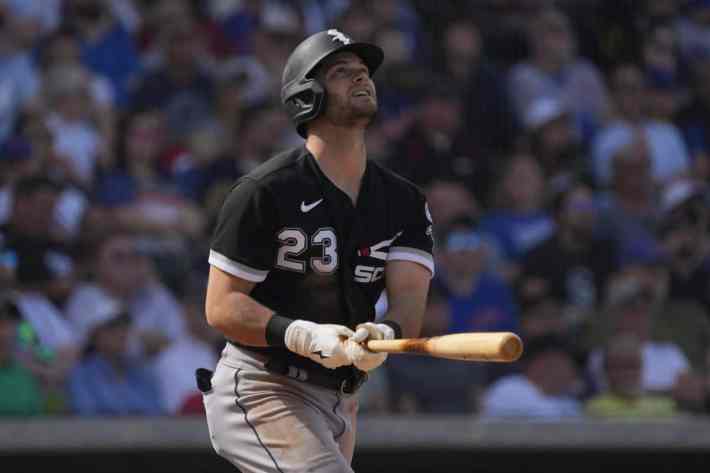
No. 7: Andrew Benintendi (NA)
It also seems like the recipient of the largest free agent contract in White Sox history should rank higher than seventh, but that goes to show you what $75 million gets. It's not that Benintendi isn't important, because he should upgrade the top of the order and the outfield defense before we see how Guaranteed Rate Field affects his power output. That's all great.
But he's played the last two years for the Royals, and while he was fine-to-good by his standards, the Royals' seasons probably wouldn't have unfurled much differently without him. The counterpoint is that the Angels can't make the postseason with Mike Trout and Shohei Ohtani, but there's a reason why they get the Tungsten Arm O'Doyle tweet and Benintendi doesn't.
PERTINENT: How much might Guaranteed Rate Field help Andrew Benintendi?
No. 6: Tim ANderson (6)
You could have him higher, and I'd get it. I had him in the final four before the Sox signed Elvis Andrus, because I didn't like any up-the-middle combinations in a world where Anderson has to miss a month.
And Anderson has a tendency to miss a month. He's topped out at 123 games the last four years, or 132 if you can extrapolate his 49 of 60 games in 2020. This would be a great year to break out of that rut, but after four years, it's fair to adopt a show-me stance.
As Josh has said, Anderson notices how shortstops are getting paid, and he has plenty to play for as he thinks about his next deal. Dansby Swanson received a seven-year, $177 million contract in due in large part to his availability, as he's played in 382 of 384 possible games the last three years, not counting the 32 postseason games since 2020. Anderson doesn't have to turn into Cal Ripken Jr. all of a sudden, but 140 games would represent progress.
No. 5: Lance Lynn (10)
No. 4: Lucas Giolito (1)
You could argue that Giolito needs to be better than Lynn because he's eight years younger and this is supposed to be his prime. You could argue that Lynn needs to be better because he's getting paid like a postseason starter and he needs to be worth his club option for the stability of the rotation in 2023.
Both are seeking a rebound, and both have battled an assortment of ailments here and there, but I give Giolito the edge because he has a greater variance between his healthy best and healthy worst. The Sox can't really afford to see the latter, because I don't like the chances of Kopech or Clevinger absorbing a setback up top the way Johnny Cueto did the year before.
No. 3: Eloy Jiménez (5)
Thanks to the DH penalty and below-average defense when he wears a glove, Jiménez could have a good, full season and finish, like, seventh on the White Sox in WAR. Nevertheless, Jiménez looks like the team's best power bat, and when it comes to the contributions of a Silver Slugger type, sometimes the Potter Stewart test is all you need.
Jiménez is the best bet for a 30-homer season on the roster, and if he blasts 37 dingers, drives in 115 and finishes with an OPS closer to .900 than .800, any other stats take a secondary status. Maybe you'll point to games played in the outfield if his defensive numbers are ghastly, but I'd pin that on the roster construction. Jiménez needs to play a full season, make loud contact, and get the ball in the air with regularity. The rest might not take care of itself, but there really isn't a "rest" that is Jiménez's jurisdiction.
No. 2: Dylan Cease (3)
Cease might be hard-pressed to follow up his runner-up finish in the AL Cy Young race due to his high walk total and slider-heavy approach. It's not the easiest way to make a living, and if his ERA drifts back into the 3's and Lynn or Giolito end up reclaiming the mantle of staff ace, the Sox can survive.
What separates Cease is his durability. Fun fact: Nobody in baseball has made more starts over the last three seasons than Cease. He's tied with José Berríos, Germán Márquez and Aaron Nola with 76. That's what the Sox can't afford to lose this season, and that's why he stands out.
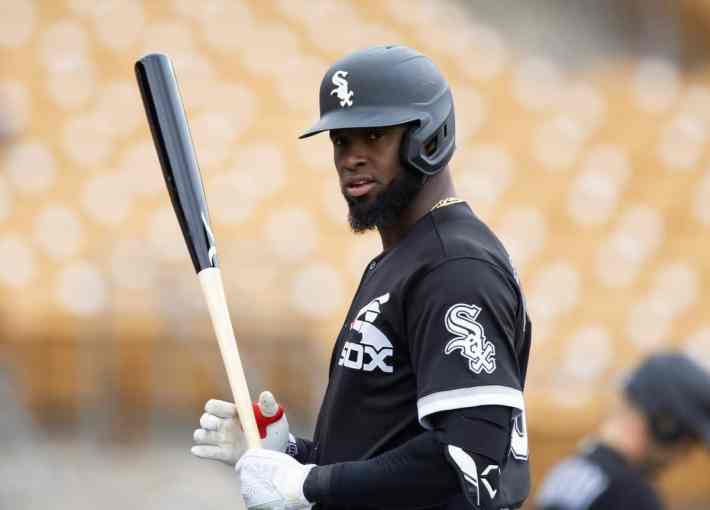
No. 1: Luis robert Jr. (2)
Robert has played professional baseball stateside since 2018, and he's only played 100 games once, racking up 122 appearances between Winston-Salem, Birmingham and Charlotte in 2019. He played 56 of 60 possible games in 2020, sure, but then he lost more than half of the 2021 season to a hip injury, then fell short of triple digits last season due to leg issues, hand issues, and a bout of vertigo in between.
The production around those issues has impressed. He's basically accrued one full season's worth of playing time over the last two years (166 games), and he's hitting .307/.344/.486 with 40 doubles, 25 homers and 17 stolen bases. His defense has shown the signs of wear and tear, as his play fell from Gold Glove-caliber to middling.
Given this rocky past, it feels foolish to pin such grand hopes on Robert, but he effectively symbolizes the delicate state of the White Sox as a whole. If they once again disappoint, well, everybody lost their capacity for shock and sorrow last season. If this season somehow exceeds all expectations and extends into October, you'll know how it happened, and Robert has as much say in it as anybody. That's why he's here.
